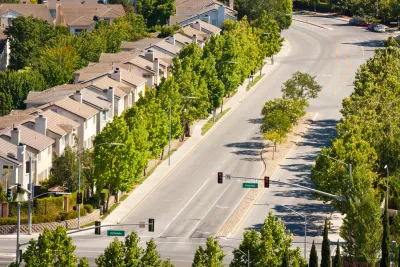A recent Mercatus Institute paper addresses the frequency of minimum density regulations, maximum parking requirements, and similar regulations.

I recently coauthored a paper for the Mercatus Institute (a think tank operating out of George Mason University) about the prevalence of regulations designed to promote smart growth and green building—in particular, maximum parking requirements, minimum density requirements, and rules related to LEED certification.
We focused primarily on ascertaining how many cities have actually enacted such regulations; our sample was 24 American cities with populations of between half a million and one million people. We chose this sample because it is large enough to reflect a reasonably diverse group of cities, yet small enough to be manageable. The sample includes transit-oriented cities like San Francisco and Washington, car-oriented cities like El Paso and Fort Worth, declining older cities like Detroit and Baltimore, and growing cities like Portland and San Jose.
Although critics of smart growth often claim that the smart growth movement seeks to "force" density on Americans, we found that minimum density requirements are in fact quite rare. Only two of our 24 cities (San Jose and Portland) generally require minimum densities for residential zones. Both cities, however, have a wide variety of zones, and have plenty of low-density zones. For example, San Jose has a minimum density in its low-density residential zone—but this minimum density is only one dwelling unit per acre. Because conventional planning wisdom seems to be that at least seven units per acre is necessary for decent bus service, San Jose is hardly mandating smart growth. Similarly, Portland has one zone where the maximum density is one dwelling unit for every two acres; thus, the city's density requirements constrain flexibility more than they mandate smart growth.
Maximum parking requirements are slightly less rare. Only three of the 24 cities (San Francisco, Louisville, and Fort Worth) have maximum parking requirements for every (or almost every use): interestingly, two of them (Louisville and Fort Worth) are car-oriented cities whose maximums are calculated as a percentage of their minimums. For example, Louisville requires 1.5 parking spaces per dwelling unit in most of its residential zones, and its parking cap is three spaces per unit—a lot of parking. Limited parking caps are more common: seven cities have imposed parking maxima for some or all commercial uses, and five for specified parts of a city (usually near downtown or near transit stations).
In addition, we also discussed rules requiring "green" (that is, energy-conserving) building design. Only four cities (San Francisco, Austin, Boston, and San Jose) require developers to meet LEED or similar green building guidelines—and in all but San Francisco, these rules are limited to larger projects. However, many other cities provide a variety of incentives for green building.
What about the wisdom of these rules? Because these regulations are often either new or not particularly controversial, we did not find very much information about the real-world side effects of these rules. All of these regulations are likely to have some positive results: for example, a smaller amount of parking may lead to less driving and thus to less pollution, while more compact development might lead to higher transit ridership as more people located near bus and train stops.
On the other hand, any regulation could, in theory, burden building enough to deter development: for example, if builder X decides that there is not enough market demand to justify building at minimum density Y, X might decide to build housing in more permissive suburbs. Similarly, if X cannot afford the short-term expense of green building features or thinks tenants will want more parking than a city allows, it may move to suburbia. But whether any of these negative effects has actually occurred may require additional research.

National Parks Layoffs Will Cause Communities to Lose Billions
Thousands of essential park workers were laid off this week, just before the busy spring break season.

Retro-silient?: America’s First “Eco-burb,” The Woodlands Turns 50
A master-planned community north of Houston offers lessons on green infrastructure and resilient design, but falls short of its founder’s lofty affordability and walkability goals.

Delivering for America Plan Will Downgrade Mail Service in at Least 49.5 Percent of Zip Codes
Republican and Democrat lawmakers criticize the plan for its disproportionate negative impact on rural communities.

Test News Post 1
This is a summary

Test News Headline 46
Test for the image on the front page.

Balancing Bombs and Butterflies: How the National Guard Protects a Rare Species
The National Guard at Fort Indiantown Gap uses GIS technology and land management strategies to balance military training with conservation efforts, ensuring the survival of the rare eastern regal fritillary butterfly.
Urban Design for Planners 1: Software Tools
This six-course series explores essential urban design concepts using open source software and equips planners with the tools they need to participate fully in the urban design process.
Planning for Universal Design
Learn the tools for implementing Universal Design in planning regulations.
EMC Planning Group, Inc.
Planetizen
Planetizen
Mpact (formerly Rail~Volution)
Great Falls Development Authority, Inc.
HUDs Office of Policy Development and Research
NYU Wagner Graduate School of Public Service





























